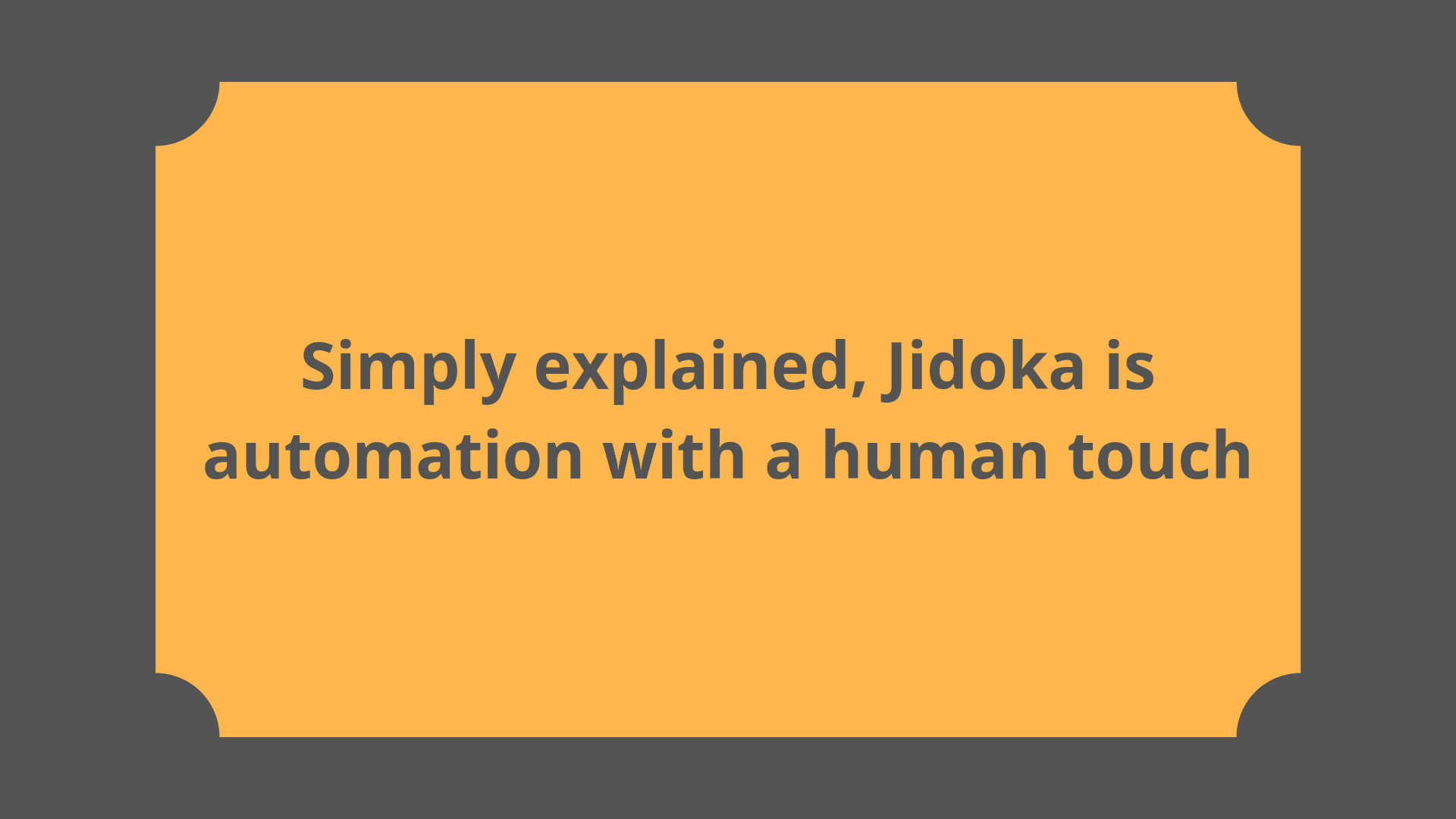Establishing a continuous flow of work is vital for the successful implementation of Lean in any organization. Doing so will allow you to deliver value to your customers exactly when they need it without keeping too much inventory.
However, to make the most of this way of processing work, you need to ensure that your product's quality meets the expectations of your customers.
Definition of Jidoka
By definition, Jidoka is a Lean method that is widely adopted in manufacturing and product development. Also known as autonomation, it is a simple way of protecting your company from delivering products of low quality or defects to your customers while trying to keep up your takt time.
Jidoka relies on 4 simple principles to ensure that a company would deliver defect-free products:
- Discover an abnormality
- Stop the process
- Fix the immediate problem
- Investigate and solve the root cause
These 4 steps can be applied in various ways depending on your industry and can serve as a steady foundation for achieving continuous improvement of your process.

By implementing the Jidoka concept, anyone in your organization can stop the workflow as soon as they notice a problem that harms your product's quality.
It is one of the two pillars that turned Toyota into the giant it is today. Jidoka is often referred to as the forgotten pillar of the Toyota production system because of the relatively low attention it gets compared to the JIT system.
Origin of Jidoka
Jidoka was first used in 1896 by the Japanese inventor Sakichi Toyoda who later became the creator of Toyota Motor Company.
It was in the form of a simple device that could stop the shuttle of an automatic loom if the thread broke. The mechanism was able to detect if a thread is broken and, therefore, immediately shut down the machine and signal that there’s a problem to avoid producing defects. Afterward, the worker operating the loom had to fix the problem and resume the production process.
This was a revolutionary innovation because it allowed one operator to run more than one machine at a time and increased production capacity significantly. Due to its usefulness, a UK company bought the patent and practically provided the funding for Toyota's creation.
How to Apply Jidoka in Knowledge Work?
Implementing Jidoka in a knowledge-work environment such as software development seems a bit more complicated due to the diversity of work processes. However, it is perfectly applicable when you consider the different steps of a workflow of this type.
The first two steps of Jidoka can easily be automated, but fixing the immediate problem and solving the root cause requires a human touch.
For example, if you are developing a software solution for a customer, you can implement multiple rounds of automated code tests in the development process. These tests will evaluate the quality of the features you are preparing and highlight any problems without testing every single functionality by hand.
Afterward, your team can halt further development and focus on fixing the issues at hand by digging into the problem and investing in the root cause that led to the current situation.
Fixing the code should happen by hand as the responsible developer needs to find where the code logic breaks. Depending on the seriousness of the issue, she should either go for a quick fix to temporarily solve it or dig deep to identify the root cause and deal with it.
As soon as the problem is solved, the development process should be resumed.
Businessmap is the most flexible software
to align work with company goals
In Summary
Jidoka is one of the most important methods in the Lean arsenal for ensuring built-in quality and making the most of continuous flow. With its help you can:
- Discover process abnormalities
- Stop your workflow to prevent quality issues
- Fix problems in a timely fashion
- Identify and remove the root cause of any process problem








